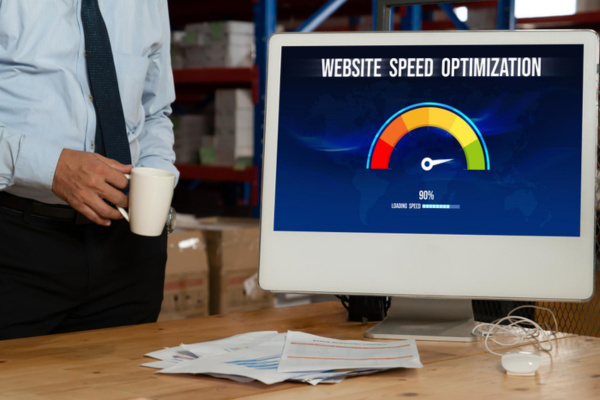Shopify SEO
Shopify SEO: Best Strategies to Boost Your Shopify Store's Traffic and Sales
Shopify is a popular e-commerce platform that helps business owners create, manage, and sell online. However, having products, pricing, and design is insufficient to build a successful Shopify store. It requires the proper SEO (Search Engine Optimization) strategy to push your store to higher positions in search engines. In this blog, we will discuss the various aspects of Shopify SEO and its importance in detail.
1. Why Shopify SEO is Important?
Shopify SEO is a strategy that helps increase the number of visitors to your Shopify store and grow your site traffic organically. In today’s digital world, organic traffic is a key to the success of a store. When your store’s SEO is done correctly, your products can be easily found through Google Search, YouTube, or other search engines. This can help grow your business, boost sales, and increase brand value.

2. On-Page SEO for Shopify:
On-page SEO refers to the SEO techniques applied to each page of your Shopify site, optimizing its content and structure. Here are some key elements of on-page SEO for Shopify:
- Product Descriptions: Your product descriptions should be clear and informative so that customers can easily understand the product’s benefits. Including keywords in descriptions is very important.
- Title Tags: Every page’s title tag should be optimized appropriately, as it determines the relevance of a page to search engines.
- URL Structure: Using clean and SEO-friendly URL slugs is essential for Shopify stores.
- Image Optimization: Images of products and other visuals should be optimized to load quickly and support SEO.

3. Shopify SEO Optimization Tips:
Proper Shopify SEO optimization involves following specific strategies. Here are a few valuable tips:
- Fast Loading Speed: A fast-loading site is essential. If your site is slow, users will leave. Improve speed by using image compression, code minification, and reliable hosting services.
- Mobile Optimization: With most people browsing the internet on mobile, your Shopify site must be mobile-friendly.
- Schema Markup: Using schema markup will help Google better display product information, ratings, pricing, and other details.

4. Product SEO:
Optimizing your Shopify product pages should be a priority. Here are a few steps to follow:
- Product Title: Make sure the product title is clear, attractive, and includes relevant keywords that customers might search for.
- Bullet Points: Use bullet points to list product benefits clearly so users can easily understand the features.
- Meta Descriptions: Meta descriptions offer a brief product overview and are shown in search engine results.

5. Shopify SEO Tools:
To enhance your Shopify store’s SEO, there are several valuable tools you can use:
- Yoast SEO (for Shopify): Although Yoast SEO is primarily designed for WordPress, it can also be used on Shopify with specific plugins.
- SEO Booster: A popular Shopify app that automates SEO tasks like creating meta tags and submitting sitemaps.
- Plugin SEO: This Shopify app scans your site and identifies any SEO issues to help you improve your SEO.

6. Common Shopify SEO Mistakes to Avoid:
Many Shopify store owners make common mistakes in their SEO efforts. Here are a few:
- Duplicate Content: Using the same content in multiple places can harm SEO. Always use unique content.
- Keyword Stuffing: Overusing keywords can lead to poor SEO results. Maintain the correct keyword density.
- Ignoring Internal Linking: Failing to use proper internal linking between pages can hinder SEO performance.

7. Shopify SEO Analytics Tools:
To track the success of your Shopify store’s SEO, using analytics tools is crucial. Google Analytics and Google Search Console are two of the best tools for monitoring key metrics such as traffic, conversions, and keyword performance.
- Google Analytics: This tool helps you track how many visitors your site receives, which pages they visit, how long they stay, and where they come from. It provides valuable insights into your audience’s behavior, allowing you to optimize your store accordingly.
- Google Search Console: This tool helps you monitor your site’s presence in Google search results. It shows you the keywords bringing traffic, how your pages are ranking, and alerts you to any issues like broken links or indexing problems.
Using both tools together helps you get a complete picture of your Shopify store’s SEO performance, allowing you to make data-driven decisions and improve your strategy over time.
8. Local SEO for Shopify Stores:
If you run a local Shopify store, local SEO is essential. Local SEO makes your business visible in a specific geographic area, mainly when you operate in a particular city or region. Local SEO involves setting up your GMB (Google My Business) profile, using local keywords, and creating custom local content.
- GMB (Google My Business): Setting up a GMB profile for your Shopify store is crucial. It provides details like business location, hours of operation, and phone number, which can easily be found in Google search.
- Local Reviews: Collecting positive customer reviews will help improve your store’s ranking on Google and other search engines.

9. Shopify Site Structure and SEO:
The structure of your Shopify site plays a significant role in SEO. A poorly designed structure can negatively affect both visitors and search engine visibility.
- Straightforward Navigation: A good site structure will help you organize pages and product categories efficiently. Ensure your site’s navigation is simple so users can find products quickly.
- Internal Linking: Each page should have internal links to other pages on the site. This helps search engines understand the relationship between pages.
- URL Structure: Shopify URLs should be clean and SEO-friendly. For example, use a URL like yourstore.com/men/shirts, which reflects the product category and keyword.

10. Content Marketing and Shopify SEO:
Content marketing is an essential part of SEO. To enhance your Shopify store’s SEO, you can create blog posts, videos, guest posts, and other content. Creating content allows you to provide more information about your products, which helps increase organic traffic to your site.
- Blog Posts and Content: Starting a blog on your Shopify site and creating SEO-optimized content is highly effective. You can write blog posts around keywords related to your products and services.
- Video Marketing: Video content is also essential for SEO. Product videos, tutorials, and customer reviews can drive traffic and increase user engagement.

11. The Future of Shopify SEO:
The future of Shopify SEO is becoming more customized and intelligent. With advancements in technology, SEO is becoming easier and more affordable. New developments like Artificial Intelligence (AI) and Machine Learning will make SEO strategies more effective.
- AI and Machine Learning: Search engines are now becoming more accurate in delivering relevant content using AI. Shopify content and keyword strategies must align with AI and Machine Learning to ensure SEO success.

- Voice Search Optimization: As voice search becomes more popular, optimizing for voice search has become a new challenge for Shopify SEO.
Understanding how customers search via voice and adjusting your keywords and content accordingly is crucial.
